Metatarsalgia is a type of pain and inflammation in the ball of the foot. This is the spot between the arches and toes on the bottom of your foot, just above the big toes. Metatarsalgia starts beneath five bones at the bases of your toes, which are called metatarsals (metatarsals).
The symptoms of metatarsalgia are named for the five metatarsal bones in your feet’s midsection that connect to your toes.
Metatarsalgia pain can be caused by a variety of diseases and may receive a variety of therapies.
This article is a part of our foot pain series. If you want to learn more about other foot conditions, please feel free to check out all of our articles on our blog here.
This article is all about Metatarsalgia and explains the symptoms, causes, diagnosis, treatments and lifestyle changes to prevent this condition. So let’s get started.
Symptoms of metatarsalgia
The most typical symptom of metatarsalgia is a pain in the metatarsal region below the ball of the foot. Metatarsalgia may or may not be accompanied by bruising and swelling or inflammation. Symptoms can appear suddenly or develop over time. The following are some of them:
- Burning, sharp or aching pain. The affected area of pain is the ball of your foot, just behind your toes. As you stand or walk, the pain may increase.
- Tingling or numb toes. The inflammation of the metatarsal region can cause tingles or numbness in your toes.
- Feels like walking on legos. I hope you can imagine the feeling that I mean with this metaphor.
- Pain that worsens when you exercise, flex your feet or run. Especially on hard surfaces like concrete. Rest usually improves the condition.
- Sharp or shooting pain. Metatarsalgia can also cause a sharp pain in the ball of your foot, similar to that feeling when you throw your back out. But on the foot, of course.
Aching feet don’t always need medical treatment. Your feet might hurt after a long day of standing or a tough workout. However, if your discomfort persists for more than a few days, it’s wise to consult with your doctor.
Causes of metatarsalgia
Metatarsalgia is caused by too much pressure on a specific spot in your foot. It’s frequently due to the impact of your feet on high-impact sports. Alternatively, you might have an uncommon abnormality with your bones or muscles that distributes pressure across your feet. The most common causes of metatarsalgia include:
- Overuse and intense training. The injury is caused by running or another exercise that is too intense. Distance runners are susceptible to metatarsalgia, which is characterized by pain in the metatarsal area of the foot. Anyone who participates in a high-impact sport, especially if their shoes are ill-fitting or old, is vulnerable.
- Too much bodyweight. Because the majority of your body weight is transferred to your forefoot when you walk, additional pounds put more strain on your metatarsals. Losing weight might alleviate or eliminate symptoms.
- Ill-fitting shoes. Your shoes might be too tight, compressing your foot. Your shoes may also be too loose and allow your foot to slide back and forth.
- Wearing the wrong shoes. High heels or sneakers without adequate cushioning and arch support can put strain on the ball of your foot by forcing you to put too much weight on it.
- Your foot shape. High arches can put additional strain on the metatarsals. Second toes that are longer than the big toe, which shifts more weight to the second metatarsal head than normal, can also cause extra strain.
- Foot deformities. A misshapen foot can be the result of wearing shoes that are too small or high heels. Metatarsalgia is a term used to describe heel and toe pain caused by a downward-curling toe (hammertoe) and inflamed, painful bumps at the base of your big toes (bunions).
- Stress fractures. Small fractures in the metatarsals or toe bones can be uncomfortable and affect how you distribute your weight.
- Morton’s Neuroma. Between the third and fourth metatarsal heads, this noncancerous fibrous tissue growth surrounding a nerve is typical. It produces symptoms that are comparable to those of metatarsalgia, as well as metatarsal stress.
- Hammertoe. Metatarsalgia is a common cause of hammertoe, which is when your toe becomes bent or crooked due to chronic irritation and pressure against the front of your shoe.
- Hypermobile foot bones. Metatarsalgia can be the result of increased pressure on your feet that occurs when you have hypermobile foot bones or extremely flexible joints.
- Excessive pronation when walking or running. Metatarsalgia can also be caused by excessive pronation when walking or running. Metatarsal bones in your feet are affected when they’re unable to maintain a straight momentum during movement.
- A tight Achilles tendon. Metatarsalgia can be a result of a tight Achilles tendon, which is the band of tissue that attaches your calf muscles to your heel.
Risk factors
In the United States, metatarsalgia is a common forefoot ailment in athletes who participate in high-impact sports. Running and jumping are the most frequent offenders. Track and field runners are particularly susceptible, but other athletes—such as tennis players, football players, baseball players, and soccer players—are also at risk of developing forefoot problems.
While anyone can get metatarsalgia, you are at a higher risk if you:
- Have arthritis that causes inflammation, such as rheumatoid arthritis, gout or osteoarthritis
- Are overweight
- Have other foot conditions such as hammertoe, corns and callusues or bunions
- Wear ill-fitting shoes
- Wear high heels regularly for long hours
- Participate in sports that require a lot of running and jumping
- Are at an advanced age. The natural cushion of your feet gets thinner with age
The diagnosis of metatarsaglia
Your doctor will begin a metatarsalgia exam by asking you about your symptoms. He or she will also manually inspect your foot. To discover the underlying cause of your symptoms, you may need an X-ray to exclude stress fractures or other issues that might be causing discomfort. Other times, an ultrasound or MRI scan may be performed to examine the soft tissues surrounding your metatarsophalangeal joints.
Treatment
Metatarsalgia is usually easy to cure without surgery. A metatarsal pad, a surgical shoe, or a shoe insert may be used to relieve the painful region of your foot. Rocker-soled athletic shoes or ragged-heel dress shoes might be advised.
The conservative treatments of resting, changing shoes, and using a metatarsal pad may be sufficient to alleviate symptoms.
Nonsteroidal anti-inflammatory drugs, such as ibuprofen (Advil, Motrin, Nuprin) or naproxen (Aleve, Naprosyn), can provide pain relief in the short term.
If you have pain because of a pinched nerve, the doctor may administer a nerve block in conjunction with long-acting steroids.
Surgery to realign the metatarsal bones might be an alternative in rare cases when conservative treatments fail to relieve your discomfort and your metatarsalgia is complicated by foot issues such as hammertoes.
You can gradually resume normal activities when the discomfort has subsided. Try beginning with a low-impact form of exercise, such as swimming.
Lifestyle changes and prevention
You can try the following home remedies to ease your pain and prevent metatarsalgia from coming back:
- Rest. To prevent your foot from getting further damaged, don’t put it through any more stress. After standing or walking, raise your foot. You may have to give up your favorite pastime for a while, but you can stay in shape with low-impact exercises like swimming or cycling.
- Arch supports. If insoles aren’t effective, your doctor may recommend arch supports to relieve metatarsal stress and improve foot function. Over-the-counter arch supports are available, or they can be custom made to fit you precisely.
- Wear proper footwork. Too-tight or too-loose shoes, as well as wearing high heels, might induce foot pain. Wear footwear that is suited to the activities you participate in.
- Ice your feet. Make an ice pack and wrap it in a thin towel and apply it to the afflicted area for 20 minutes at a time several times a day. To keep your skin safe, cover the ice packs with a little cloth.
- Take pain-relievers. To reduce discomfort and inflammation, take ibuprofen (Advil, Motrin IB, others), naproxen sodium (Aleve) or aspirin.
- Take care of your feet. Keep your feet clean and dry. When you get a pedicure, get one that moisturizes your skin to keep cracks from forming. If you have diabetes, check your feet daily for sores or blisters that might need attention from a doctor.
- Keep your weight in check. Metatarsalgia pain is a common symptom of not having a healthy body mass index (BMI). Metatarsalgia in obese people can be a result of excess weight.
- Warm-up and stretch before exercise. Metatarsalgia pain can be a result of having inflexible feet. Metatarsalgia treatment includes following a routine of warmup exercises and stretches to help your feet stay flexible and strong.
- Re-new your running shoes more often. Metatarsalgia pain is often caused by running on old shoes. To avoid injury, change your running shoes once every season.
Takeaways
Conservative treatment and properly fitting shoes are usually sufficient to treat metatarsalgia. Early identification and therapy of the condition have a high success rate. Surgical intervention may be required in some situations to cure the pain’s source.
I hope you found some valuable information in this article that can help you with your foot pain. Please comment your story, experiences and ways out of foot pain below to help other readers as well. Your input is highly appreciated.





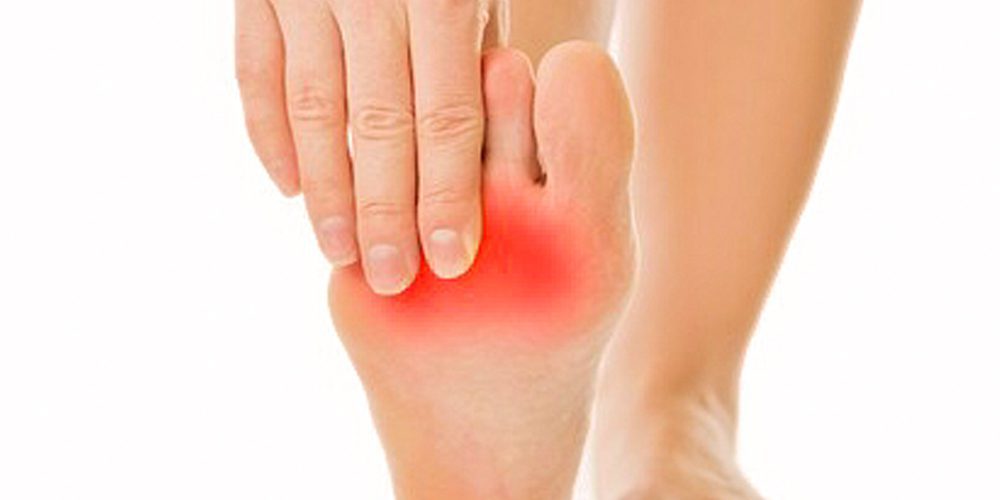





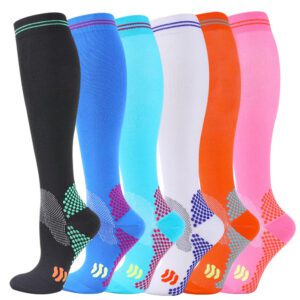
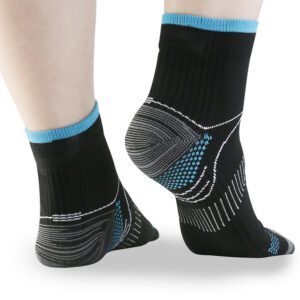
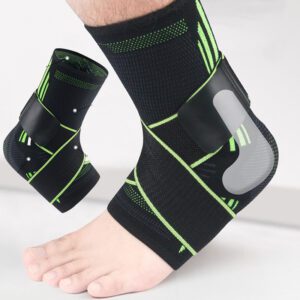






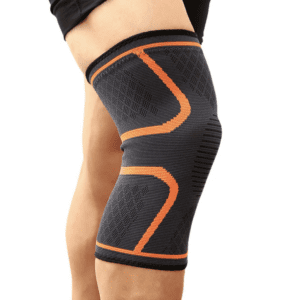


2 Responses
This is very good information. I would like to share this article with my husband via email so he can help me deal with metatarsalgia.
Very thorough! Trying the conservative treatment asap!!
Thanks!!!